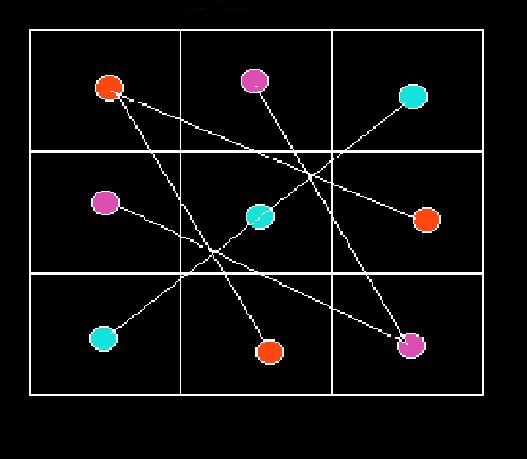

This section is a continuation on the concept of converting several sequences of tuples into the next higher set of tuples as was introduced in
his section, on the other hand, will show that conversion of two sets of tuples (imaginary and integer), using the same R, into the next higher triple of tuples is also possible as long as an and an+1 equal 1.
so that:
in which the ratio (R) approaches (1 + √2)2 as the numbers bn+1,cn+1,bn and cn get larger and larger. Moreover, these tuples when squared, are used as diagonals in generating square of magic squares. The formulas for generating these diagonals are:
Tables I and II show the first ten values obtained for the four primary numbers 2, 3, 5, and 7 where the differences between neighboring cells differ by the multiplicand R. Moreover, c = b × √2 and the multiplicand √2 will be used below in two formulas in the production of known sequences. Note also that all numbers in Table I following the number 2 are even, while all numbers following the odd primes are odd.
|
|
When a is equal to 1 equation c2 = 2b2 − a2 becomes c2 = 2b2 − 1 or as usually stated the known Pell equation c2 − 2b2 = −1. It is known that the general values for the cs and bs from the Pell equation are:
and
where when r is even (2n) the numbers correspond to Table I and when odd (2n−1) to Table II. This page, however, deals with equations using Rn and R−n where again
We now consider four new formulas which are analogous in form to the Binet formula for Fibonacci numbers (F(n)), i.e., having the similar structure:
which generate the same results as the original Pell equations. Thus, we can produce four new formulas, having as the only variable R, which take on the forms:
where the third and fourth equations are sums of the first two equations and where G2i(n) is also multiplied by a factor of 2. The results of the calculations employing the four new equations and using seven values for n starting at 0 are tabulated in Table III:
| n | G1i(n) | G2i(n) | G1r(n) | G2r(n) |
|---|---|---|---|---|
| 0 | 0 | 1 | 1 | 1 or 2 |
| 1 | 2 | 3 | 5 | 7 |
| 2 | 12 | 17 | 29 | 41 |
| 3 | 70 | 99 | 169 | 239 |
| 4 | 408 | 577 | 985 | 1393 |
| 5 | 2378 | 3363 | 5741 | 8119 |
| 6 | 13860 | 19601 | 33461 | 47321 |
The values in Table III of G1i(n), G2i(n); G1r(n) and G2r(n) are identical to the values in Tables I and II just as in the original Pell equations. In addition, the values at line n = 0 are not part of the original diagonals for magic squares which Tables I and II represent.
The Fiboacci sequence is usually constructed using the well known formula:
The four G sequences above may also constructed analogously using a Fibonacci type construct:
Thus, for example, taking all four values from n = 4 of Table III where Cx specifies the column being used:
Thus both methods employed for the construction of the four sequences in Tables I and II are analogous to the the Binet and the Fibonacci methods for generating the known Fibonacci sequences.
And thus, by analogy with the Fibonacci sequence we can see that extending the four colums of Tables I and II to infinity results in the generation of four sequences which were found in The On-line Encyclopedia of Integer Sequences (OEIS). This, however, is the first time that the next element
These sequences are listed in the OEIS as A001542, A001541, A001653 and A002315, respectively. The value at n = 0, however, may be 1 or 2 depending on which two of the methods is used. The known value for comparison is 1 for G2r(n) in A002315.
The upshot of these findings is that R behaves similar to φ where the ratios of bn+1∕bn and cn+1∕cn approach the value of R as the subscript n increases without bound just as Fn+1/Fn approaches the value of 1.6180339... as the subscript n increases without bound. And very importantly, the four G formulas (which of the 2 are the Pell?) and the Fibonacci type G formula behave identical to to their counterparts giving exact solutions.
Thus we shown that R has properties similar to the golden mean (φ) and we can show that R is related to φ by the following series of equations:
and
and this is probably the reason that R behaves as it does having magical properties similar to φ. The primary use for these numbers, acting as diagonals for magic squares when squared, are what originally these numbers were intended for.
Go back to homepage.
Copyright © 2019 by Eddie N Gutierrez. E-Mail: edguti144@outlook.com